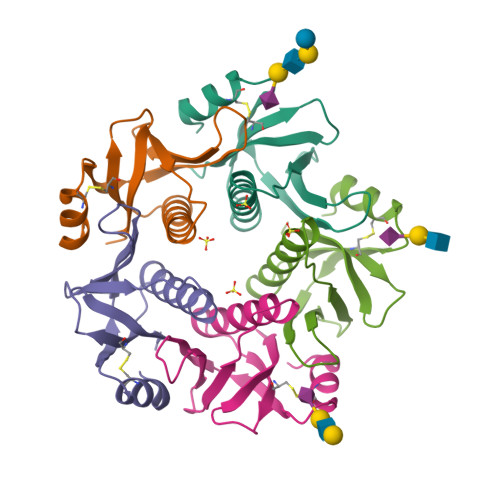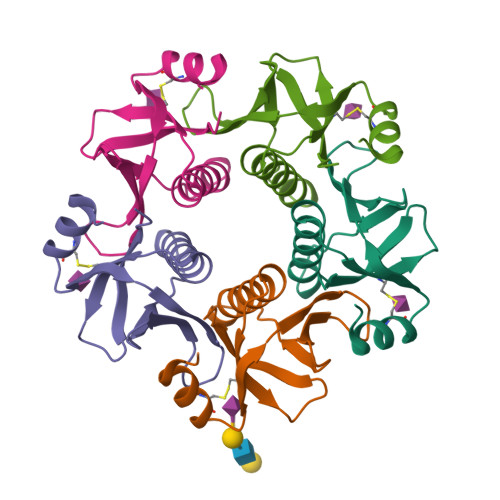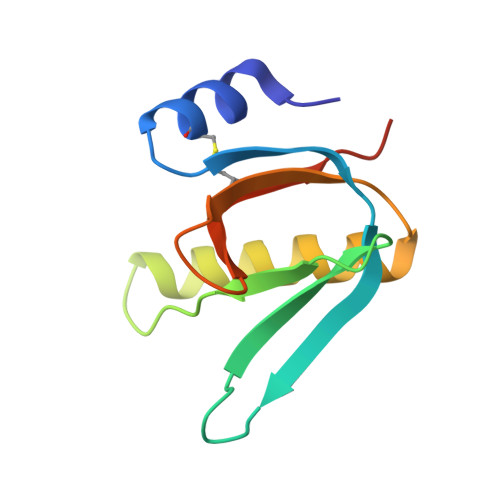Characterization of the ganglioside recognition profile of Escherichia coli heat-labile enterotoxin LT-IIc.
Zalem, D., Juhas, M., Terrinoni, M., King-Lyons, N., Lebens, M., Varrot, A., Connell, T.D., Teneberg, S.(2022) Glycobiology 32: 391-403
- PubMed: 34972864
- DOI: https://doi.org/10.1093/glycob/cwab133
- Primary Citation of Related Structures:
7PRP, 7PRS - PubMed Abstract:
The heat-labile enterotoxins of Escherichia coli and cholera toxin of Vibrio cholerae are related in structure and function. Each of these oligomeric toxins is comprised of one A polypeptide and five B polypeptides. The B-subunits bind to gangliosides, which are followed by uptake into the intoxicated cell and activation of the host's adenylate cyclase by the A-subunits. There are two antigenically distinct groups of these toxins. Group I includes cholera toxin and type I heat-labile enterotoxin of E. coli; group II contains the type II heat-labile enterotoxins of E. coli. Three variants of type II toxins, designated LT-IIa, LT-IIb and LT-IIc have been described. Earlier studies revealed the crystalline structure of LT-IIb. Herein the carbohydrate binding specificity of LT-IIc B-subunits was investigated by glycosphingolipid binding studies on thin-layer chromatograms and in microtiter wells. Binding studies using a large variety of glycosphingolipids showed that LT-IIc binds with high affinity to gangliosides with a terminal Neu5Acα3Gal or Neu5Gcα3Gal, e.g. the gangliosides GM3, GD1a and Neu5Acα3-/Neu5Gcα3--neolactotetraosylceramide and Neu5Acα3-/Neu5Gcα3-neolactohexaosylceramide. The crystal structure of LT-IIc B-subunits alone and with bound LSTd/sialyl-lacto-N-neotetraose d pentasaccharide uncovered the molecular basis of the ganglioside recognition. These studies revealed common and unique functional structures of the type II family of heat-labile enterotoxins.
Organizational Affiliation:
Department of Medical Biochemistry and Cell Biology, Sahlgrenska Academy, Institute of Biomedicine, University of Gothenburg, Sweden.
























